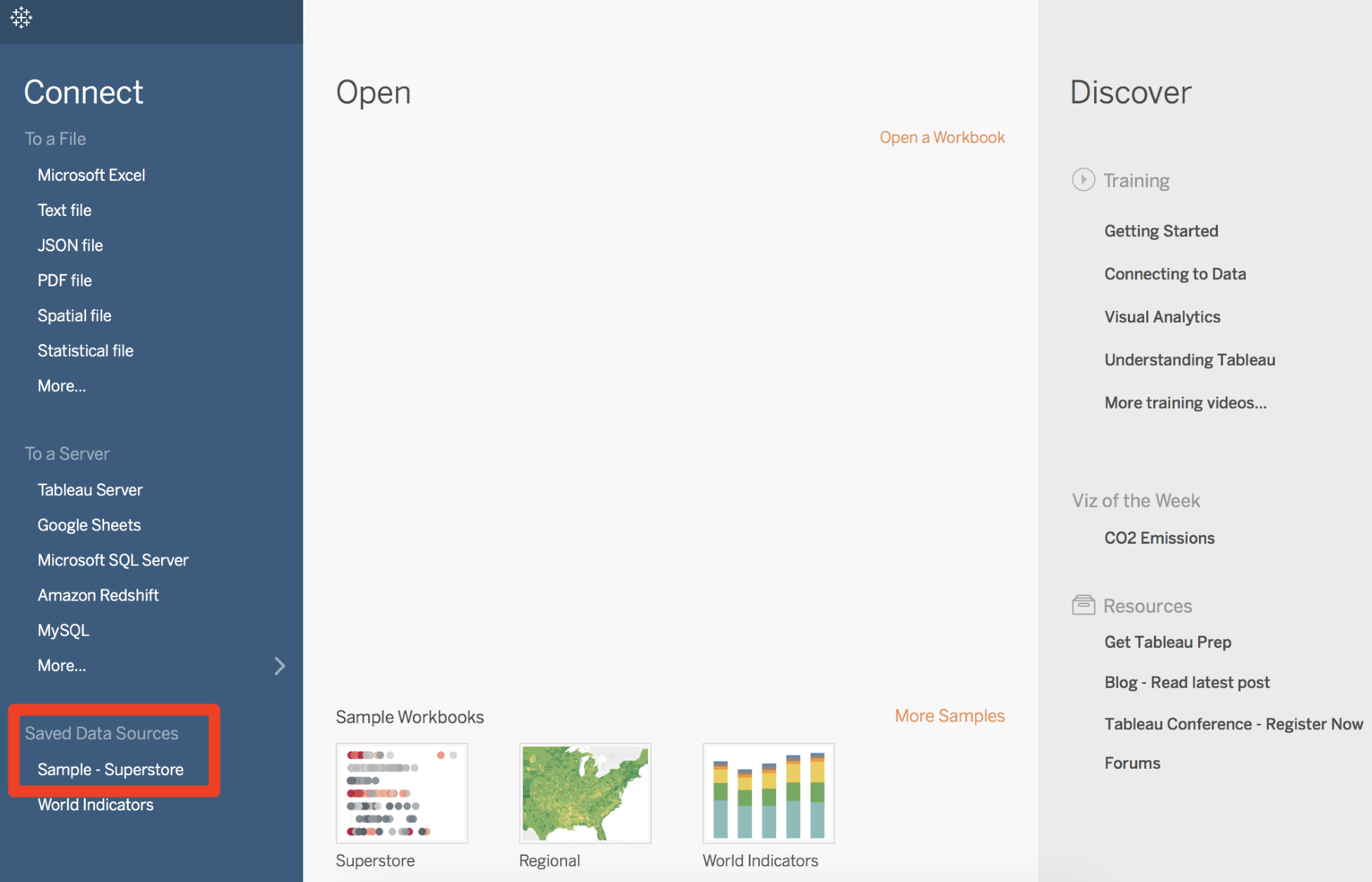Finally! Visualization! I know it was tempting to skip the last chapters and start here. If you did that, please start at the beginning. It's crucial that you read everything from the start. The reason is not that you won't be able to understand this chapter, but because you'll miss an essential part of what Tableau can do for you.
This chapter is divided into two parts. Creating visualizations is the core of Tableau and there is a lot to say! In this first part, we'll go through three major aspects:
- Creating a visualization the automatic and manual way
- The different Mark types
- Mark properties
In this chapter, for all the examples, we'll use Tableau's Sample – Superstore saved Data Source. You can find it on the first page when you open Tableau:

Simply click on it, and you're ready. The Data Source is based on the Sample Superstore Excel file and uses many features we saw in the previous chapter (Hierarchies, Folders, Bins, Sets, and so on...



